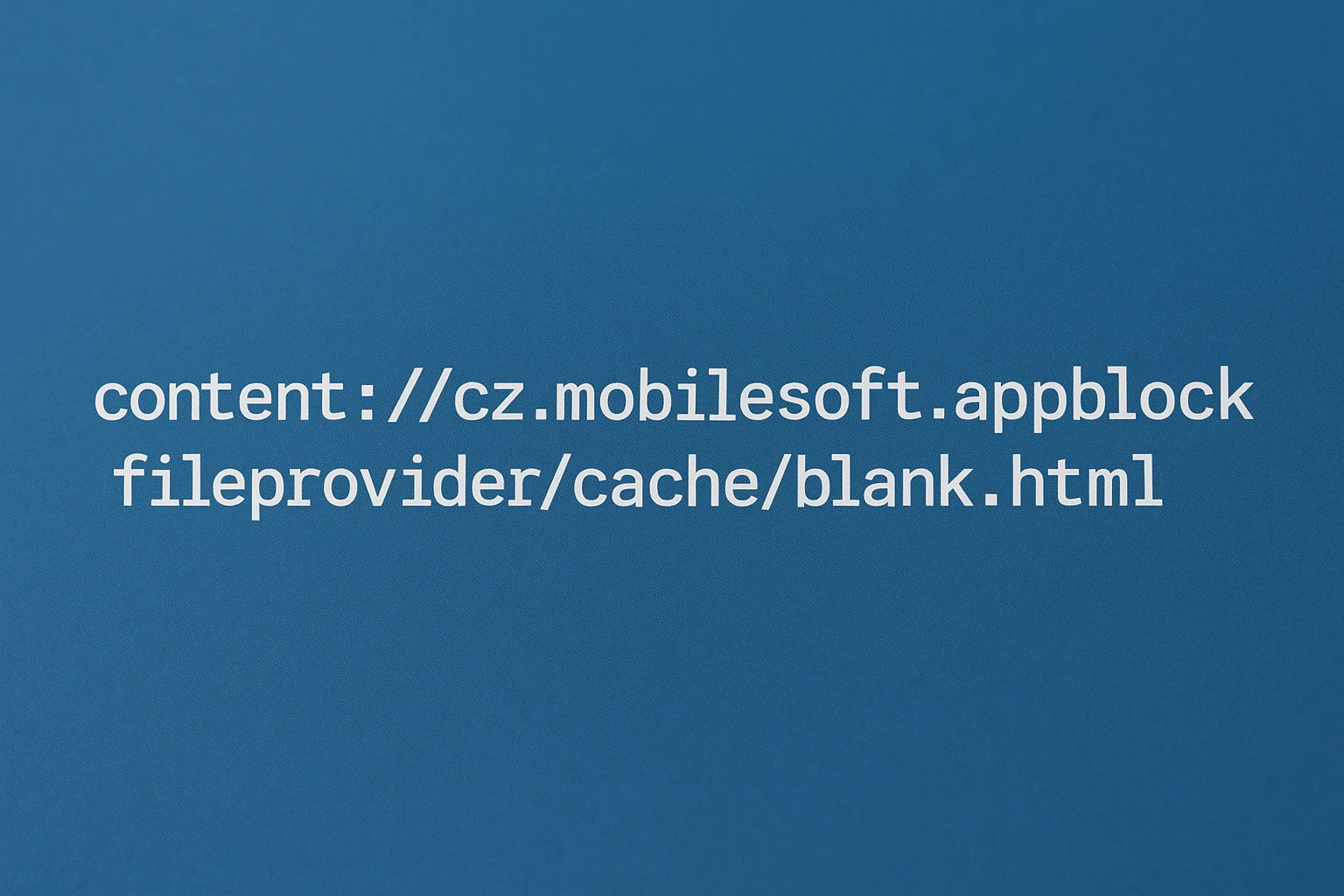Introduction
Android devices frequently generate content:// URIs that may appear confusing to everyday users. Among them, one particular entry often stands out: content://cz.mobilesoft.appblock.fileprovider/cache/blank.html.
This long path may look intimidating at first, but in reality, it belongs to the AppBlock application developed by MobileSoft. AppBlock is widely known for helping users manage digital distractions by blocking selected apps and notifications. The URI in question is essentially a cache file reference (specifically a blank HTML file) that plays a small yet important role in how the app functions.
Understanding this path matters for both regular Android users who encounter it in device logs and developers who wish to learn from AppBlock’s caching strategies. In this comprehensive guide, we’ll break down what this URI means, why it is safe, how it contributes to app performance, and how both users and developers can deal with it effectively.
What is content://cz.mobilesoft.appblock.fileprovider/cache/blank.html?
At its core, this URI is:
- A content URI provided by AppBlock’s FileProvider module.
- A reference to a cached blank.html file used internally as a placeholder.
- A resource that ensures smooth WebView rendering and error prevention within the app.
In plain words, whenever AppBlock needs to load an empty or fallback page inside its interface, instead of creating a new resource every time, it pulls up this blank HTML file from its cache.
See also Mobile App Development Company Garage2Global – A Complete 2025 Guide
Why Does AppBlock Use a Cached Blank HTML File?
1. Optimized Resource Handling
Instead of creating temporary files each time, the app reuses this blank page. This reduces unnecessary CPU and memory consumption.
2. Preventing Errors
Apps that display content inside WebViews may crash if they cannot find a valid resource. Having a default blank.html ensures there’s always a valid fallback.
3. Supporting Stability
By caching a small, lightweight file, AppBlock ensures that its interface remains stable even when network content fails to load.
4. Performance Gains
Cached blank pages load faster, reducing app startup times and improving the user experience when switching between blocking modes.
Key Benefits for Users and Developers
For Everyday Users
- Smooth App Experience: You won’t face sudden app crashes due to missing content.
- Safe URI: The path is completely safe as long as it originates from the official AppBlock app.
- Efficient Battery Use: Reduced CPU cycles and lightweight caching contribute to better performance.
For Developers
- Debugging Aid: Identifying the blank.html cache helps in tracing storage handling.
- Learning Example: Shows how fallback caching can stabilize Android apps.
- WebView Best Practice: Demonstrates how developers can avoid null-reference crashes.
How to Access or Inspect content://cz.mobilesoft.appblock.fileprovider/cache/blank.html
Step 1: Identify the Source App
This URI specifically belongs to the AppBlock – Stay Focused app by MobileSoft.
Step 2: File Manager Access
- On non-rooted devices, direct access isn’t possible due to Android’s sandboxing.
- On rooted devices or using advanced file explorers, you may locate the file under AppBlock’s cache folder.
Step 3: Using ADB for Developers
If you’re a developer interested in debugging:
adb shell content query –uri content://cz.mobilesoft.appblock.fileprovider/cache/blank.html
This command can help you inspect the file properties or caching logic.
Step 4: WebView Development
If you’re developing apps that use WebViews, you can replicate this strategy by caching a lightweight fallback page to improve reliability.
Common Mistakes to Avoid
- Deleting Cached Files Blindly: Removing this blank.html file might cause fallback failures in the AppBlock app.
- Assuming It’s Malware: Many users panic when they see unusual URIs. But this path is legitimate, safe, and tied to AppBlock only.
- Ignoring File Permissions: Without proper permissions, accessing or modifying this URI can lead to app crashes.
Best Practices for Managing This URI
For Users
- Do Not Panic: The path is harmless and expected.
- Avoid Force Deletion: Use in-app cache clearing rather than manually deleting files.
- Monitor Storage: Occasionally check cache size but let system tools handle cleanup.
For Developers
- Follow FileProvider Standards: Always use Android’s FileProvider to share cache files securely.
- Scoped Storage Compliance: For Android 10+, implement scoped storage for safe file handling.
- Test on Real Devices: Emulator behavior may differ; always validate cache functionality on physical devices.
Expert Recommendations
- Use Whitelisting: If you run tracker-blocking apps, whitelist trusted URIs like this one.
- Backup Before Cleanup: If you use aggressive cache-clearing tools, ensure fallback files are backed up.
- Apply Read Permissions Correctly: Implement READ_EXTERNAL_STORAGE or scoped permissions where needed.
- Adopt Lightweight Caching: Developers should mimic this method to reduce errors and enhance performance.
FAQs About content://cz.mobilesoft.appblock.fileprovider/cache/blank.html
Q1: What exactly is this URI?
It’s a reference to a cached blank.html file used by AppBlock for fallback purposes.
Q2: Is it safe?
Yes, completely safe when linked to the verified AppBlock app.
Q3: Can I delete it?
You can, but it’s not recommended. Deleting may cause minor UI glitches in AppBlock.
Q4: Why do I see this in logs repeatedly?
AppBlock frequently loads the cached blank page during sessions, which is why it appears often.
Q5: Can I open this file directly?
Not usually. It’s stored in private app storage, accessible only with the right permissions or developer tools.
Q6: What can developers learn from it?
It demonstrates how simple caching of fallback resources improves app performance and reliability.
Conclusion
The URI content://cz.mobilesoft.appblock.fileprovider/cache/blank.html may look complex, but it serves a simple and important purpose. For users, it ensures stability, faster load times, and safe fallback handling. For developers, it provides a valuable example of how to use FileProvider and caching effectively.
Key takeaways:
- It’s safe and expected inside AppBlock.
- Plays a crucial role in fallback and performance.
- Should not be deleted unless you know exactly what you’re doing.
Understanding such URIs not only removes confusion but also builds trust in app behavior. Whether you’re a casual user or a developer, knowing how these small files work can help you maintain smoother Android experiences.


